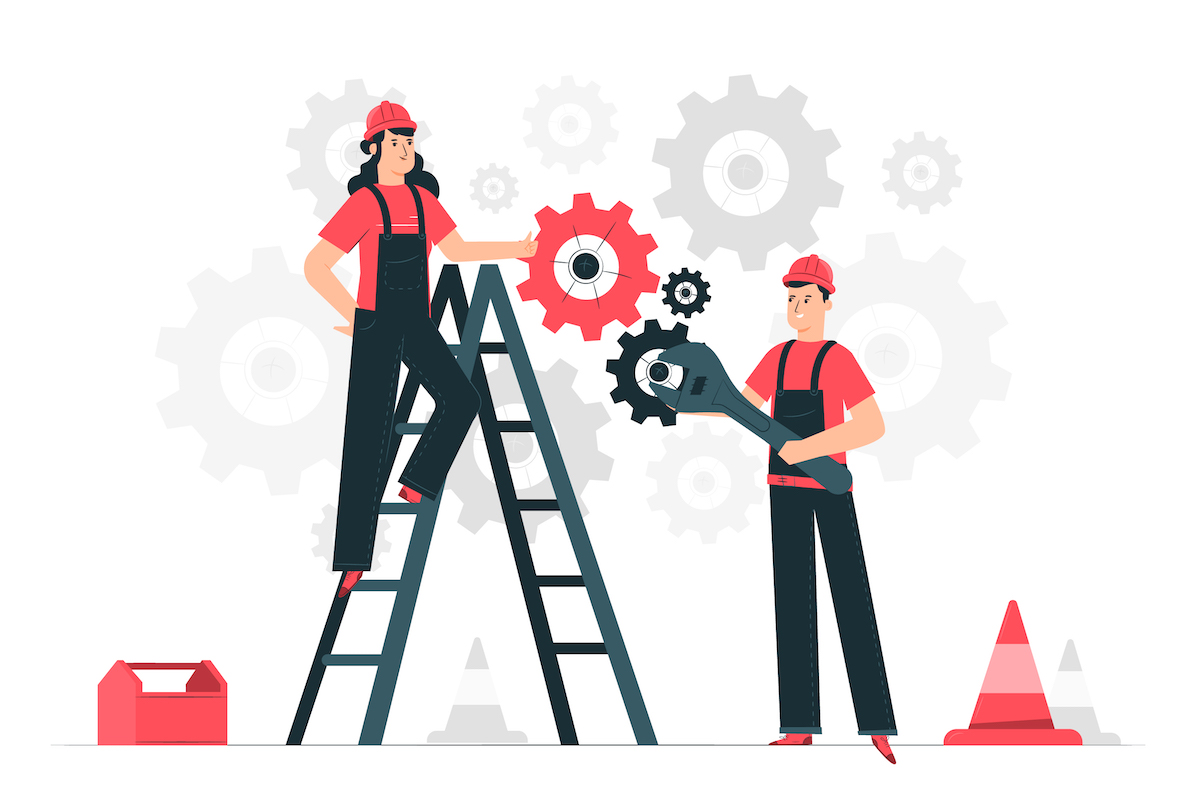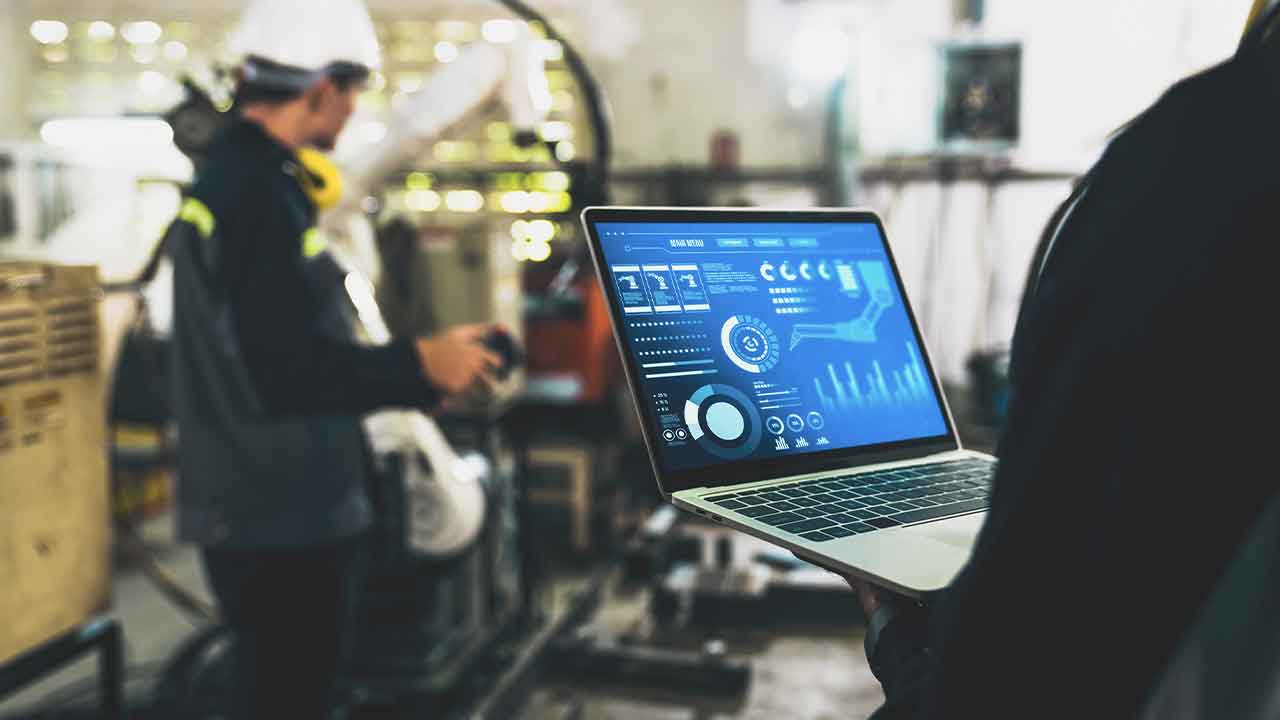Providing Smart Machine Maintenance to Customers
Intelligrated, now part of Honeywell, is a North American-based automated material handling solutions provider, servicing distribution and manufacturing customers. A confluence of industry forces has increased demand for their sophisticated automated systems, and uptime reliability requirements are higher than ever, requiring preventive and predictive maintenance services. The shortage of skilled maintenance personnel adds further pressure to maintain high customer machine availability.
All of these factors have created a maintenance service opportunity for Intelligrated. They have developed a computerized maintenance management software (CMMS) product designed just for the material handling customer. They call their product IRIS, the Intelligrated Reliability Intelligence Solution. It connects to equipment at the customer’s location using IIOT techniques and gathers machine data for the software to analyze. Intelligrated can then refine maintenance schedules, dispatch service personnel to the customer facility and provide maintenance services, thus assuring the valuable uptime.
Dave Trice is Intelligrated’s senior director of business development, Lifecycle Support Services. IIOT-World has interviewed Dave and asked some questions. The following is an inside view of the value that customers place on this approach to maintenance. Dave’s comments represent the latest on trends in the changing world of industrial data gathering.
Q. The industry is experiencing a shortage of qualified maintenance personnel. What role does this labor situation play in making your CMMS solution attractive to customers? How have they reacted to this offering?
A. The high demand for skilled maintenance personnel and their legacy system knowledge strains an already limited labor pool. Intelligrated’s CMMS can help alleviate some of this pressure because it enhances the capabilities of existing staff and bolsters available resources.
The CMMS provides all relevant documentation and support material for each maintenance project and can automatically assign tasks based on individual expertise and location within the facility. The system balances work across available staff, enabling operations to make the most efficient use of technicians, and minimize delays and interruptions. This results in saving money on overtime expenses, decreasing cost per repair, reducing paperwork and using fewer outside contractors. Additionally, a CMMS can share data across multiple sites in an installation base to deliver even greater efficiency. Leveraging lessons learned from other sites can help local maintenance teams diagnose issues and implement remedial action without duplicate research or troubleshooting, saving maintenance teams significant time.
As customers face this shortage of qualified labor, anything that allows them to do more with less – especially labor – is well received. As such, a key benefit of Intelligrated’s CMMS is greater labor efficiency.
Q. Can you demonstrate a financial payback for your customers after a CMMS implementation? What factors go into this payback?
A. There’s no question that investing in a CMMS offers appealing financial returns. In fact, based solely on reducing overtime costs of maintenance technicians, operations can reap complete payback of implementation costs in less than two years. For example, take a facility with $60,000 in annual overtime costs. It adopts a CMMS, with implementation costs of $36,000. The organization can gradually cut overtime costs in half during a three-year period, down to $46,5000 in year one, $34,500 in year two and $30,000 in year three. That adds up to $39,000 in savings on overtime costs in just two years, completely recouping implementation costs.
But that’s not all – a CMMS drives ROI through more than just better labor efficiency and leaner staffing requirements. Financial benefit comes via improved equipment availability and better-informed decision making. Historical data captured by the CMMS allows for smarter parts stocking based on actual usage trends, reducing inventory by 10-15 percent – with the added convenience of automated stock replenishment through integration with OEM parts databases. What’s more, the CMMS empowers more informed decisions for asset replacement through the data it gathers against OEM wear and performance guidelines.
Q. Monitoring systems and collecting data is step one, but real benefit from IIoT applications comes with knowing what to do with it. How can operations ensure they get the most out of data they collect?
A. A CMMS application is only as effective as its data quality allows it to be. Though it can take time to accumulate enough data to set benchmarks and provide an informed foundation for strategic maintenance, an experienced vendor can help. A vendor with experience monitoring and managing material handling systems has access to years of relevant, industry-specific data pulled from actual implementations – including information from both its own equipment and systems from other manufacturers. These comprehensive, up-to-date data sets inform robust lifecycle management programs, helping the system plan and execute maintenance programs, repairs, upgrades and modifications, and more.
Pat of what makes CMMS so attractive is its ability to put data to work and leave no part of the maintenance process unassisted – even down to assigning and managing work orders. It provides enhanced operational visibility with a full suite of connected features like automated phone or email alerts based on predetermined asset conditions. One technician is empowered to perform a series of proactive measures to avoid shutdown instead of bringing in several technicians in the event of an emergency.
Q. Predictive maintenance using machine data is a relatively new maintenance technique. Is the concept of predictive maintenance catching on in the customer’s view? Does the availability of machine data help its cause and increase adoption?
A. Being able to address major equipment issues before they cause unplanned downtime is absolutely critical. As such, our customers see real value in this approach. But while capturing data certainly helps, putting it to proactive use requires a certain interpretive expertise. The CMMS technology we have today is designed to manage data collection, analysis, planning and execution of a preventive lifecycle maintenance program – and DC operators are experiencing real benefit.
The amount of data available – specifically data across multiple sites in an installation base, not just a single facility – enhances the proactive and predictive capabilities of such systems, and its case for adoption. For example, based on lessons learned across the installation base, the CMMS can refine maintenance schedules and identify signs of potential issues before they result in an outage. Taking action is as simple as the system issuing automatic updates and work orders to address similar issues on like systems or equipment, covering everything from faulty light grids to conveyor motors.
The above comments demonstrate the need for all machine builders, engineering firms and systems integrators to consider using sophisticated data gathering via IIOT techniques. This advancing capability allows advanced post-installation service to end users.
 An interview by Gary Simmerly, an engineer by education and sales engineer by choice. He founded one of the first high-tech industrial distributors servicing and supporting industrial controls for plant floor use. Great Lakes Controls (GLC) was a start-up venture to a regional distributor with six branches in 4 states. Sales grew to $20 million in 20 years. Gary is currently the President of Automation Pilot.
An interview by Gary Simmerly, an engineer by education and sales engineer by choice. He founded one of the first high-tech industrial distributors servicing and supporting industrial controls for plant floor use. Great Lakes Controls (GLC) was a start-up venture to a regional distributor with six branches in 4 states. Sales grew to $20 million in 20 years. Gary is currently the President of Automation Pilot.



